Defibrillators
Our full range of defibrillators includes both semi-automatic and fully automatic models with a variety of unique features from the world's leading manufacturers. We also offer a wide range of defibs designed specifically to be used as public access defibs (PADs).
At The Defib Pad we believe in making our site as user friendly as possible. Therefore, you will find a filter on the left hand side of the page which has been carefully designed to help you narrow down the products displayed in order to show you the models with features specific to your requirements.
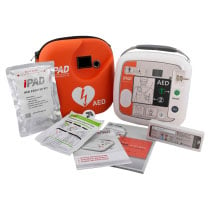
iPAD SP1 Fully Automatic Defibrillator
The iPAD SP1 fully automatic defibrillator features an adult / child mode button which means that only a single set of electrodes are required for the treatment of all cardiac arrest patients.
- Fully automatic operation
- Defibrillator warranty: 7 years + 3 years when registered
- Battery stand-by life: 60 months
- Electrode pad life: 24 months
£944.40 inc VAT
£787.00 ex VAT
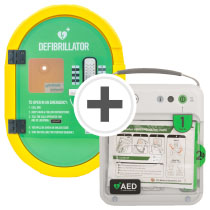
IPAD NFK200 Semi-Automatic Defibrillator with DefibSafe2 Cabinet
The IPAD NFK200 outdoor defibrillator kit comes with a Defibsafe2 heated cabinet that is ideal for public access. With an internal LED lighting source the instructions and code lock numbers are illuminated making them visible even if there is no additional external lighting.
- IPAD NFK200 Semi-Automatic defibrillator
- Defibrillator warranty - 7 years
- Includes a Defibsafe2 outdoor heated cabinet and an AED Starter Kit
£1,260.00 inc VAT
£1,050.00 ex VAT

Physio-Control Lifepak CR2 USB Fully Automatic Defibrillator
The fully automatic Stryker Lifepak CR2 USB defibrillator takes pressure off the responder by automatically delivering a shock (if needed) and providing clear guidance voice prompts throughout.
- Fully automatic operation
- Defibrillator warranty: 8 years
- Battery stand-by life: 48 months
- Electrode pad life: 48 months
From: £1,190.00 inc VAT
£991.67 ex VAT
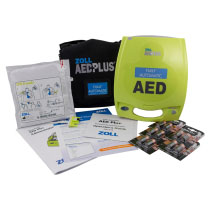
Zoll AED Plus Fully Automatic Defibrillator
The Zoll AED Plus fully automatic defibrillator has the benefit of Real CPR Help feedback technology, and features a specially designed lid to use under the patient's shoulders to help maintain an open airway.
- Fully automatic operation
- Defibrillator warranty: 7 years
- Battery stand-by life: 60 months
- Electrode pad life: up to 60 months
£1,100.00 inc VAT
£916.67 ex VAT
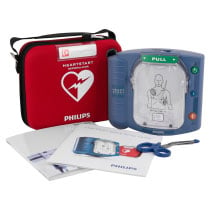
Philips HeartStart HS1 Semi-Automatic Defibrillator
Manufactured by one of the largest electronics manufacturers, the HS1 defibrillator provides step-by-step voice prompts and features an information button to give extra guidance.
- Semi-automatic operation
- Defibrillator warranty: 8 years
- Battery stand-by life: 48 months
- Electrode pad life: 18 months
£1,150.00 inc VAT
£958.33 ex VAT

Vivest PowerBeat X3 Semi-Automatic Defibrillator
The Vivest PowerBeat X3 semi-automatic defibrillator, has a full colour 5" LCD screen providing clear visual instructions and voice prompts. Suitable for use by responders with first aid training and with practise in the use of a defibrillator.
- Semi-automatic operation
- Defibrillator warranty: 8 years
- Battery stand-by life: 48 months
- Electrode pad life: 48 months
£1,066.80 inc VAT
£889.00 ex VAT
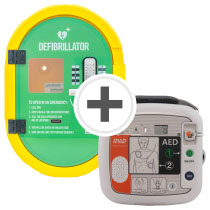
IPAD SP1 Fully Automatic Defibrillator with DefibSafe2 Cabinet
The Defibsafe2 outdoor heated cabinet with an IPAD SP1 fully automatic defibrillator bundle is ideal as a public access device. With a patient mode switch it enables the rescuer to quickly change between adult and child modes, depending on the patient, without the need for a separate set of pads.
- Includes an IPAD SP1 Fully Automatic Defibrillator
- Defibsafe2 heated outdoor cabinet with AED prep kit
- The IPAD SP1 has a 7 year warranty + 3 years extra once registered
£1,488.00 inc VAT
£1,240.00 ex VAT
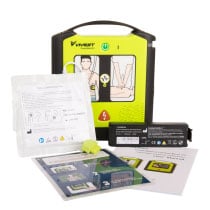
Vivest PowerBeat X1 Semi-Automatic Defibrillator
The Vivest PowerBeat X1 semi-automatic defibrillator features simple audio and visual instructions and can deliver lifesaving shocks in just 7 seconds, one of the fastest times to shock from heart analysis that is available on the market.
- Semi-automatic operation
- Defibrillator warranty: 8 years
- Battery stand-by life: 48 months
- Electrode pad life: 48 months
£829.80 inc VAT
£691.50 ex VAT
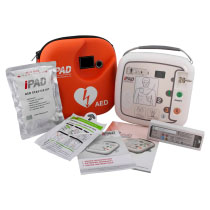
iPAD SP1 Semi-Automatic Defibrillator
The iPAD SP1 Semi-Automatic Defibrillator features dual-use electrode pads and an adult / child mode button allowing rescuers to easily switch patient type when they arrive at the scene.
- Semi-automatic operation
- Defibrillator warranty: 7 years + 3 years when registered
- Battery stand-by life: 60 months
- Electrode pad life: 24 months
£944.40 inc VAT
£787.00 ex VAT
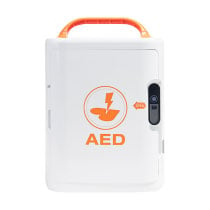
Mediana HeartOn A16 Fully Automatic Defibrillator
The Mediana HeartOn A16 fully automatic defibrillator features 3 programmed languages (English / Welsh / Polish) and an adult / child button allowing users to quickly change from adult to paediatric mode; only one set of pads is required.
- Fully automatic operation
- Defibrillator warranty: 5 years
- Battery stand-by life: 60 months
- Electrode pad life: 36 months
£1,235.99 inc VAT
£1,029.99 ex VAT
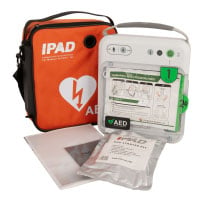
IPAD NFK200 Semi-Automatic Defibrillator
The iPAD NFK200 semi-automatic defibrillator allows switching between adult and paediatric modes with a simple button press, saving crucial time during the treatment of a sudden cardiac arrest. This unit provides clear visual and audio guidance, accompanied by an audible metronome to assist responders.
- Semi-automatic operation
- Defibrillator warranty: 7 years
- Battery stand-by life: 60 months (4 year warranty)
- Electrode pad life: 36 months
£780.00 inc VAT
£650.00 ex VAT

IPAD SPR Semi-Automatic Defibrillator
The IPAD CU-SPR semi-automatic defibrillator allows you to switch between adult and paediatric modes at the touch of a button, helping save vital seconds during the treatment a sudden cardiac arrest. It delivers clear visual and voice prompts, with an audible metronome, to guide responders effectively through the rescue process.
- Semi-automatic operation
- Defibrillator warranty: 10 years (once registered)
- Battery stand-by life: 60 months (4 year warranty)
- Electrode pad life: 36 months
£1,050.00 inc VAT
£875.00 ex VAT

IPAD NFK200 Semi-Automatic Defibrillator with Wall Bracket
The IPAD NFK200 semi-automatic defibrillator effortlessly switches from adult to paediatric mode with just the press of a button, saving crucial time during a sudden cardiac arrest. It comes with a durable metal wall bracket, ensuring the defibrillator is always accessible and visible in a central storage location.
- IPAD NFK200 Semi-Automatic defibrillator with wall bracket
- Defibrillator warranty: 7 years (extended to 10 years, once registered with manufacturer)
- Includes wall bracket and AED Responder Kit
£834.00 inc VAT
£695.00 ex VAT
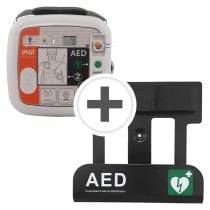
IPAD SP1 Fully Automatic Defibrillator with Wall Bracket
The IPAD SP1 indoor bundle includes a fully automatic defibrillator equipped with an adult/child mode switch, allowing treatment of cardiac arrest patients using just one set of electrode pads. It also comes with a wall-mounted bracket for easy access.
- Full-automatic operation
- Defibrillator warranty: 7 years with additional 3 years once registered with the manufacturer
- Easily store your defibrillator on the supplied wall bracket
£1,008.00 inc VAT
£840.00 ex VAT
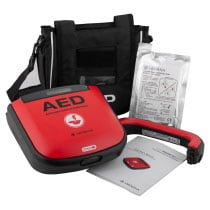
Mediana HeartOn A15 Semi-Automatic Defibrillator
This semi-automatic defibrillator features a handy mode switch to quickly change from adult to paediatric operation without having to change electrode pads or insert a separate key.
- Semi-automatic operation
- Defibrillator warranty: 5 years
- Battery stand-by life: 48 months
- Electrode pad life: 24 months
£970.00 inc VAT
£808.33 ex VAT